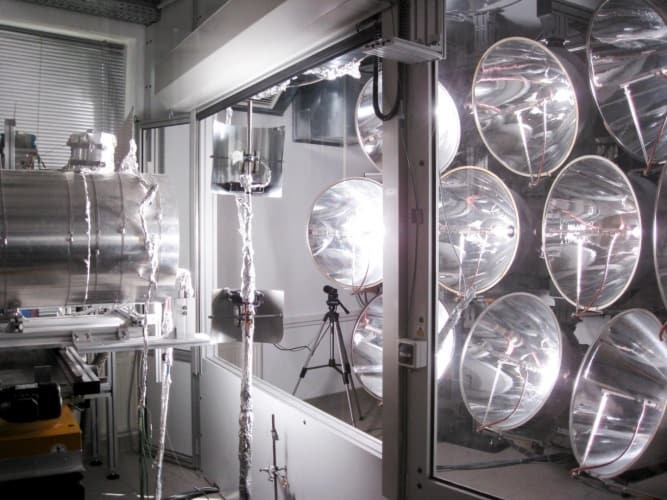Solar reactor uses storage to produce fuel around the clock
A new type of solar reactor that combines thermochemistry and thermal storage is said to be able to create solar fuels, including hydrogen, day and night.

(Credit: DLR)
Developed by scientists at the German Aerospace Centre (DLR), CONTISOL uses concentrated solar power (CSP) in a similar way to a solar thermal plant. However, rather than converting the CSP into electricity, it channels the solar energy into a monolithic cylindrical reactor with multiple channels.
Half of these channels are used for chemical reactions that split methane or water into hydrogen, while the other half heat air to temperatures in excess of 1,000°C, which is then diverted for thermal energy storage. Once the sun has dropped, the flow of the air channels is reversed, and heat that has been stored during the day continues to power the thermochemical reactions throughout the night. The work is published in Applied Thermal Engineering.
“So the main idea of CONTISOL was to build two reactors together," said lead author Justin Lapp, formerly of DLR, and now Assistant Professor of Mechanical Engineering at the University of Maine.
Register now to continue reading
Thanks for visiting The Engineer. You’ve now reached your monthly limit of news stories. Register for free to unlock unlimited access to all of our news coverage, as well as premium content including opinion, in-depth features and special reports.
Benefits of registering
-
In-depth insights and coverage of key emerging trends
-
Unrestricted access to special reports throughout the year
-
Daily technology news delivered straight to your inbox










Water Sector Talent Exodus Could Cripple The Sector
Well let´s do a little experiment. My last (10.4.25) half-yearly water/waste water bill from Severn Trent was £98.29. How much does not-for-profit Dŵr...